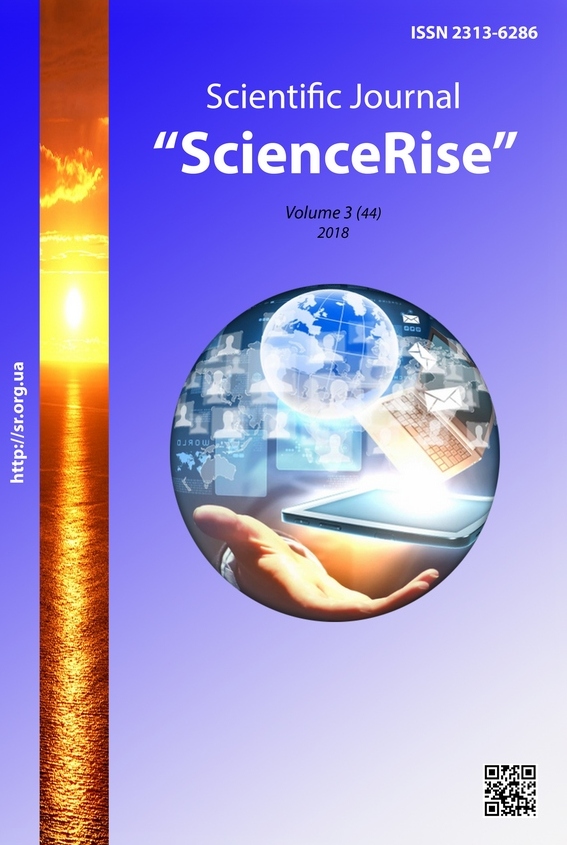Клінічний аналіз крові синиці великої Parus major
DOI:
https://doi.org/10.15587/2313-8416.2018.127387Ключові слова:
parus major, лейкоцити, еритроцити, мікроядра, паразитарні інфекції, венозна кровАнотація
Було проведено аналіз крові синиці великої на заповідній території Харкова «Гомільшанські ліси» у віковій динаміці постембріогенеза синиці великої. За допомогою власного розробленого методу взяття венозної крові з синуса ока встановлена ідентичність процентного показника лейкоцитарної форми між літературними даними та нашими результатами, що свідчить на користь застосування розробки. Дослiдженнi еритроцити, а саме, проведено мікроядерний тест, за результатами якого з упевненістю можна сказати, що вивчені особини не були схильні до ніякому хімічному або фізичному забруднення. Також в мазках крові не виявлено паразитарних інфекцій. У перспективі планується застосовувати метод взяття крові, з метою збору зразків для біохімічного і генетичного аналізів
Посилання
Cea, G. F. A., Etcheberry, K. F. C., Dulout, F. N. (1983). Induction of micronuclei in mouse bone-marrow cells by the flavonoid 5,3′, 4′-trihydroxy-3,6,7,8-tetramethoxy-flavone (THTMF). Mutation Research Letters, 119 (3-4), 339–342. doi: 10.1016/0165-7992(83)90182-3
Gashkov, S. I. (2007). Biology of the great tit (Parus major L.) in the southern taiga of Western Siberia. Tomsk, 24.
Grishchenko, V. N. (1995). Seasonal dynamics of the sex-age structure of the great tit population in Kaniv Reserve. Zapovidna Sprava v Ukraini, 1, 48–51. Available at: http://aetos.kiev.ua/selectrus/parus.htm Last accessed: 12.01.2015
Baryshnikov, P. I., Bondarev, A. Yu., Novikov, N. A. (2010). Characteristics of microorganisms of wild birds of the forest-steppe zone of Altai Territory. Bulletin of Altai State Agrarian University, 11 (73), 56–58.
Bityukov, I. P. (1979). Changes in the number of erythrocytes and hemoglobin in different periods of the reproductive function of cows. Voronezh, 105, 162.
Irisova, O. A., Irisov, E. (1982). Features of the hematological indicators in the typically high-altitude birds of Asia: adaptation at different levels of biological integration. Tomsk, 197.
Almazov, V. A., Ryabov, S. I. (1963). Methods of functional blood analysis. Leningrad, 132.
Kal-Kalif, Ya. Ya. (1941). On the leukocyte index of intoxication and its practical significance. Medical practice, 1, 31–33.
Irisov, E. A., Kamaeva, S. I., Andryushtna, O. A. et. al. (1980). Morphological and biochemical parameters of blood of birds of Putorana Plateau. Tomsk, 143.
Imangulov, Sh. A., Egorov, I. A., Okolelova, T. M. et. al. (2004). A technique to carry out scientific and production studies on poultry feeding: recommendations. Sergiev Posad: VNITIP, 43.
Green, N., Stout, U., Taylor, D. (1990). Biology. Vol. 3, No. 2. Moscow: World, 193.
Donnik, I., Derkho, M., Kharlap, S. (2015). Blood cells as an indicator of activity of stress responses in the organisms of chicks. Agrarnyi Vestnik Urala. Ptitsevodstvo, 5 (135), 68–71.
Visser, M. E., Lessells, C. M. (2001). The costs of egg production and incubation in great tits (Parus major). Proceedings of the Royal Society B: Biological Sciences, 268 (1473), 1271–1277. doi: 10.1098/rspb.2001.1661
Valkyunas, G., Yezhova, T., Mironov, S. (2001). High infection extensity and variety of blood parasites in passerine birds in South Turkmenistan. Parazitologiya, 35 (2), 135–142.
Paulke, E., Haase, E. (1978). A comparison of seasonal changes in the concentrations of androgens in the peripheral blood of wild and domestic ducks. General and Comparative Endocrinology, 34 (4), 381–390. doi: 10.1016/0016-6480(78)90278-2
Vartanyan, V. L., Karapetyan, S. K. (1959). Method of calculating blood cells of birds, amphibians and reptiles. DAN the Armenian SSR, 29 (2), 131–133.
Bessarabov, B., Kletikova, L., Kopot, O., Alekseeva, S. (2009). Protective mechanisms of birds in the postembryonic development. Ptitsevodstvo, 10, 46–47.
Miklyaeva, M., Okolnicheva, A., Popenko, N., Miklyaeva, Yu., Antipova, M.; Vostretsov, A. I. (Ed.) (2017). Studying the influence of organophosphorus pesticides on the great tit chicks inhabiting industrial gardens. Neftekamsk, 34–39. Available at: http://science-peace.ru/files/IPvSN_2017.pdf
Ponomarev, V. A., Pronin, V. V., Kletikova, L. V., Malovichko, L. V., Yakimenko, N. N. (2014). Clinical and biochemical parameters of blood of birds. Ivanovo: PresSto, 288.
Kilgas, P. (2007). Blood parameters as indicators of physiological condition and skeletal development in great tits (parus major): natural variation and application in the reproductive ecology of birds. Tartu, 43. Available at: http://dspace.ut.ee/bitstream/handle/10062/4842/kilgas_priit.pdf
Khozina, V. M., Yakimenko, N. N., Ponomarev, V. A., Kletikova, L. V. (2015). Haemato-biochemical profile of a model bird species by the example of the great tit (Parus major L.), inhabiting urbanized environment. Modern problems of science and education, 3. Available at: http://www.science-education.ru/pdf/2015/3/104.pdf
Derkho, M., Zubkova, M. (2016). The importance of haematomorphological indices in assessing bird conservation. Evolution of modern science. Kirov, 40–42.
Buslovskaya, L. K., Kovtunenko, A. Yu. (2009). Characteristics of adaptive responses in chickens exposed to vibration of different frequency and transportation. Selskokhozyastvennaya Biologiya, 6, 80–84.
Stimmer, K., Pietering, H., Murty, L., Clauder, K., Finnel, V. (1980). Toxic effects of cadmium and lead on the heart. Environmental hygiene. Moscow, 28–32.
##submission.downloads##
Опубліковано
Номер
Розділ
Ліцензія
Авторське право (c) 2018 Maria Drahulian, Angela Chaplygina, Nadiia Savynska, Svitlana Kostenko, Polina Buchek

Ця робота ліцензується відповідно до Creative Commons Attribution 4.0 International License.
Наше видання використовує положення про авторські права Creative Commons CC BY для журналів відкритого доступу.
Автори, які публікуються у цьому журналі, погоджуються з наступними умовами:
1. Автори залишають за собою право на авторство своєї роботи та передають журналу право першої публікації цієї роботи на умовах ліцензії Creative Commons CC BY, котра дозволяє іншим особам вільно розповсюджувати опубліковану роботу з обов'язковим посиланням на авторів оригінальної роботи та першу публікацію роботи у цьому журналі.
2. Автори мають право укладати самостійні додаткові угоди щодо неексклюзивного розповсюдження роботи у тому вигляді, в якому вона була опублікована цим журналом (наприклад, розміщувати роботу в електронному сховищі установи або публікувати у складі монографії), за умови збереження посилання на першу публікацію роботи у цьому журналі.

